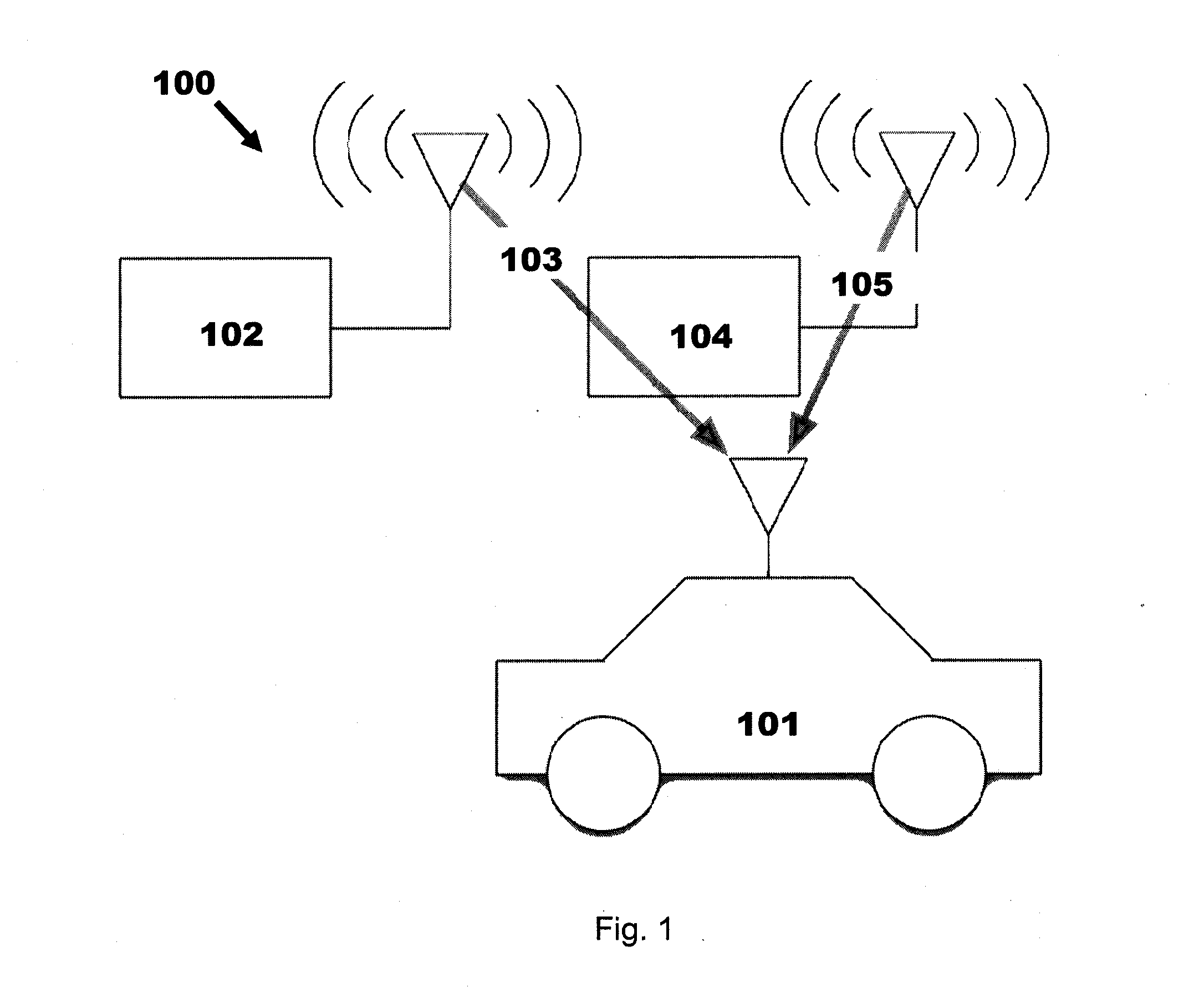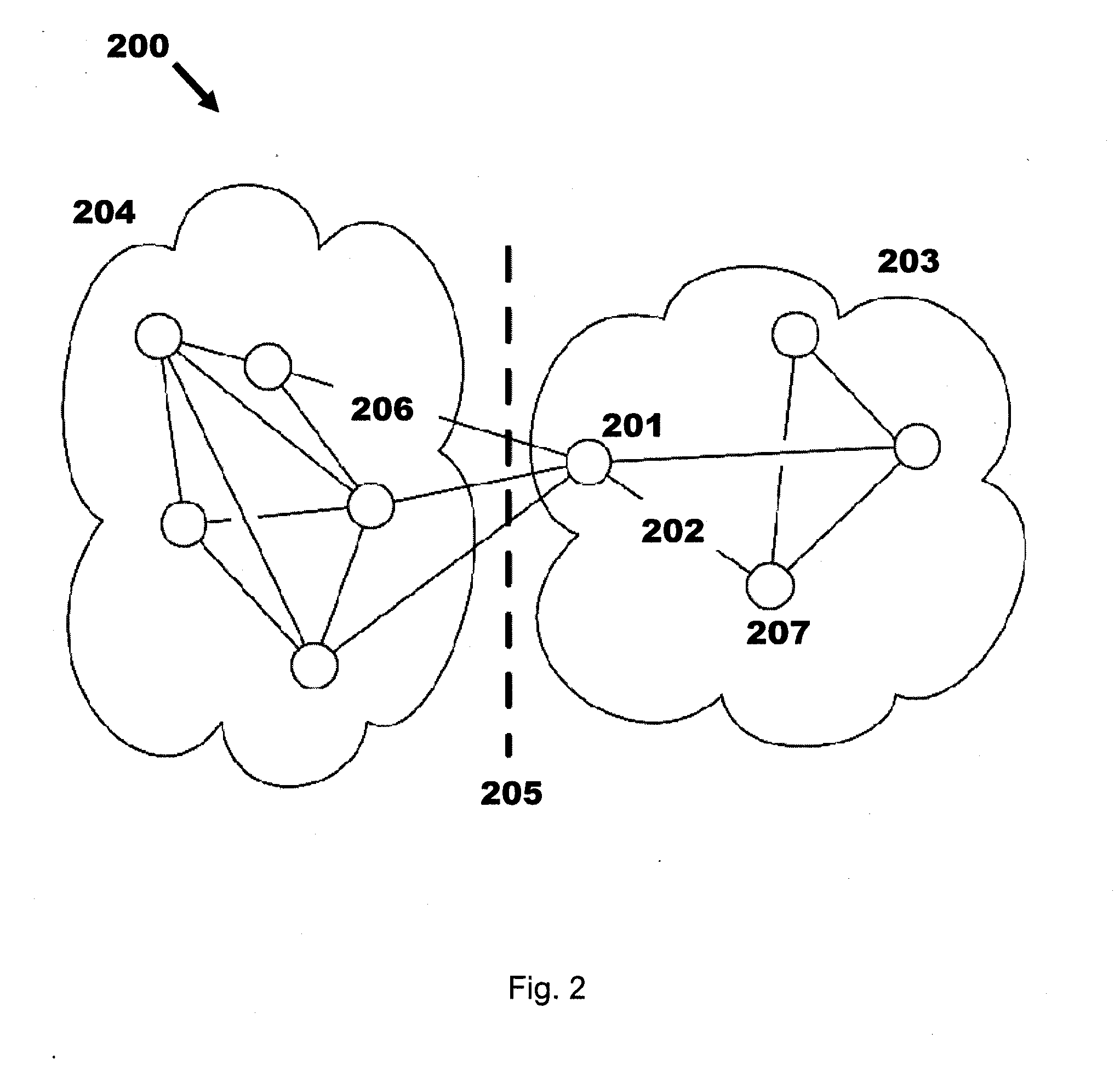Systems for and methods of determining likelihood of mobility of reference points in a positioning system
a positioning system and likelihood technology, applied in the direction of location information based services, instruments, measurement devices, etc., can solve the problems of slow time to first fix, gps often fails to cover indoor and densely developed urban areas, and requires dedicated hardwar
- Summary
- Abstract
- Description
- Claims
- Application Information
AI Technical Summary
Benefits of technology
Problems solved by technology
Method used
Image
Examples
example 5
[0165]FIG. 10 shows another method 1000 of detecting a beacon relocation. The method begins by retrieving the attributes of beacons with relationships to beacon B0 (step 501). Then the method selects any of the neighboring beacons that belong to the same family as beacon B0 (located in the same hardware or owned by the same individual or entity and expected to relocate together) (step 1001). If any member of beacon B0's family has a relocation probability above probability P1, then beacon B0 is declared to be relocated 1002.
example 6
[0166]FIG. 11 shows yet another method 1100 of detecting a beacon relocation. The method begins by retrieving the attributes of beacons with relationship to beacon B0 and the attributes of those relationships (step 501). Using a function of the Quiet Time of each relationship, a weight is applied such that relationships with small Quiet Times receive a larger weight than relationships with large Quiet Times (step 1101). Next, the method determines the distance from beacon B0's estimated location to each of the estimated locations of beacon B0's neighbors (step 1102). Then, each distance is combined with its corresponding weight to create a weighted distance value for each relationship (step 1103). From the set of weighted distance values, the Kth percentile (e.g., K=90) weighted distance is found (step 1104). Using techniques familiar to those having ordinary skill in the art, the Kth percentile can be found by arranging the weighted distance values in ascending order and selecting ...
example 7
[0168]FIG. 12 shows a further method 1200 of detecting a beacon relocation. FIG. 13 illustrates clustering techniques used by method 1200 to detect a beacon relocation. The method begins by retrieving the attributes of beacon B0's relationships and the nodes to which beacon B0 is related (step 501). Next, using the estimated positions of beacon B0 and each of its neighbors, the method calls for finding the distances between beacon B0 and each neighbor (step 1201). Using the set of distances, select the set of neighboring beacons whose distance from beacon B0 (1301 of FIG. 13) is less than distance D (e.g. 2 km), and design the selected set as the Home Cluster (step 1202 and shown as 1302 in FIG. 13).
[0169]Using the attributes of the beacons in the Home Cluster 1302, the method finds the total number of beacons, H, in the Home Cluster (step 1203) and the minimum Quiet Time, Q, out of Home Cluster members (step 1204). Finally, the method uses an equation of the following form to deter...
PUM
 Login to View More
Login to View More Abstract
Description
Claims
Application Information
 Login to View More
Login to View More - R&D
- Intellectual Property
- Life Sciences
- Materials
- Tech Scout
- Unparalleled Data Quality
- Higher Quality Content
- 60% Fewer Hallucinations
Browse by: Latest US Patents, China's latest patents, Technical Efficacy Thesaurus, Application Domain, Technology Topic, Popular Technical Reports.
© 2025 PatSnap. All rights reserved.Legal|Privacy policy|Modern Slavery Act Transparency Statement|Sitemap|About US| Contact US: help@patsnap.com



